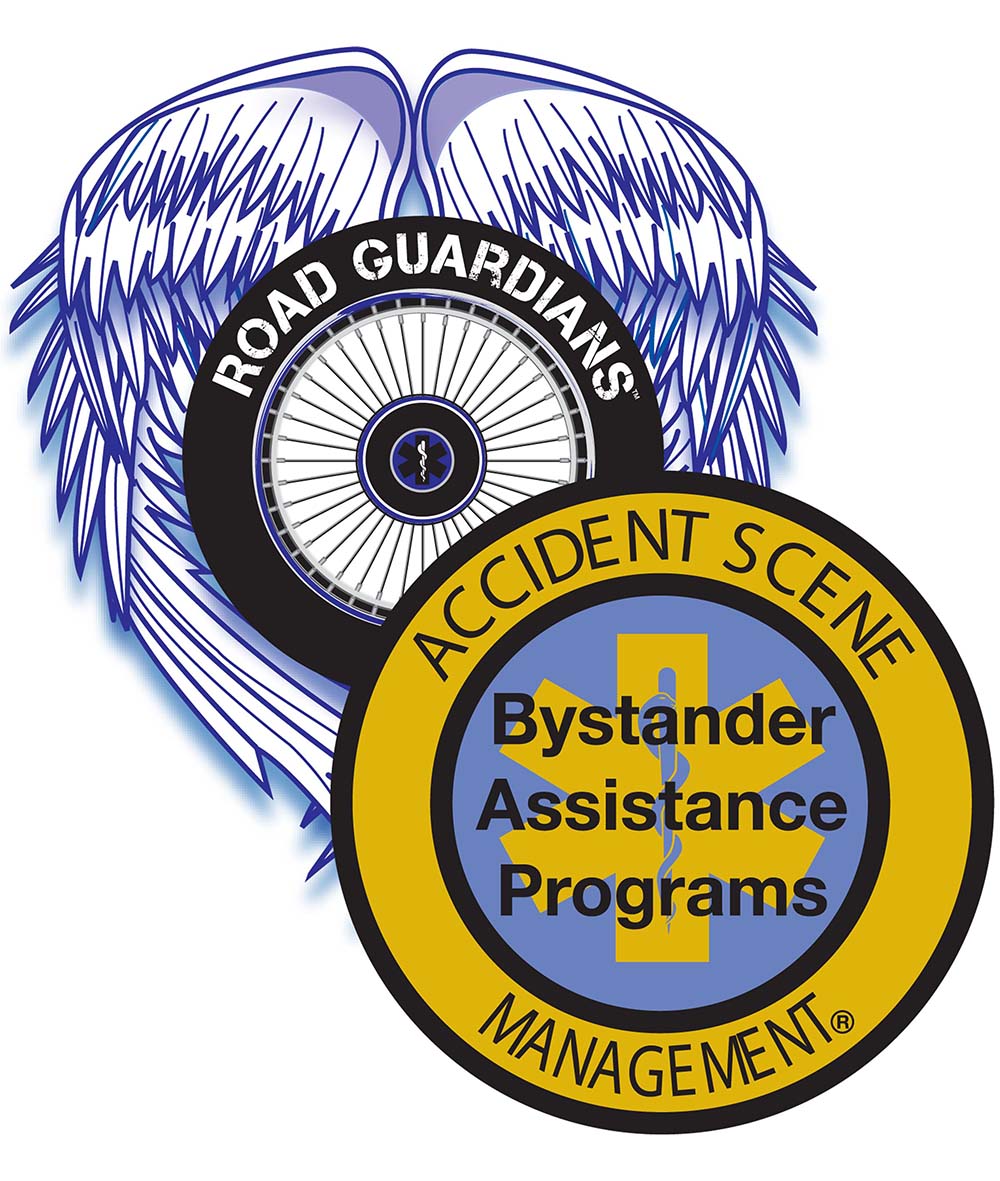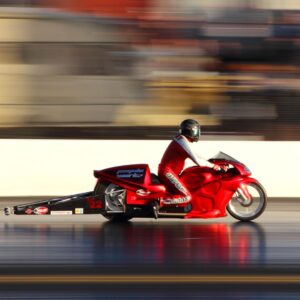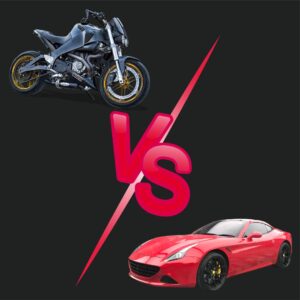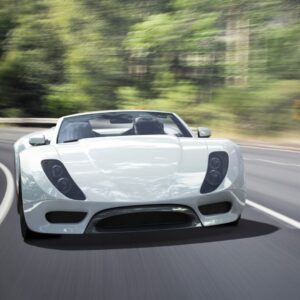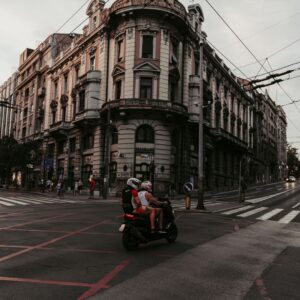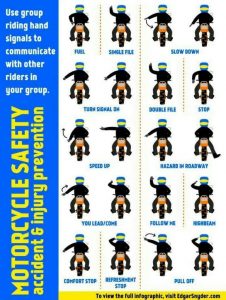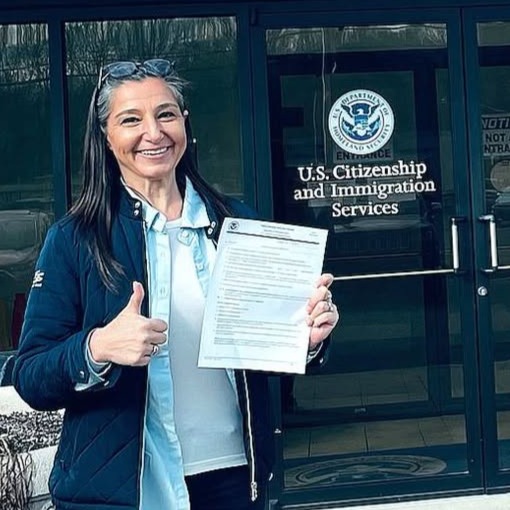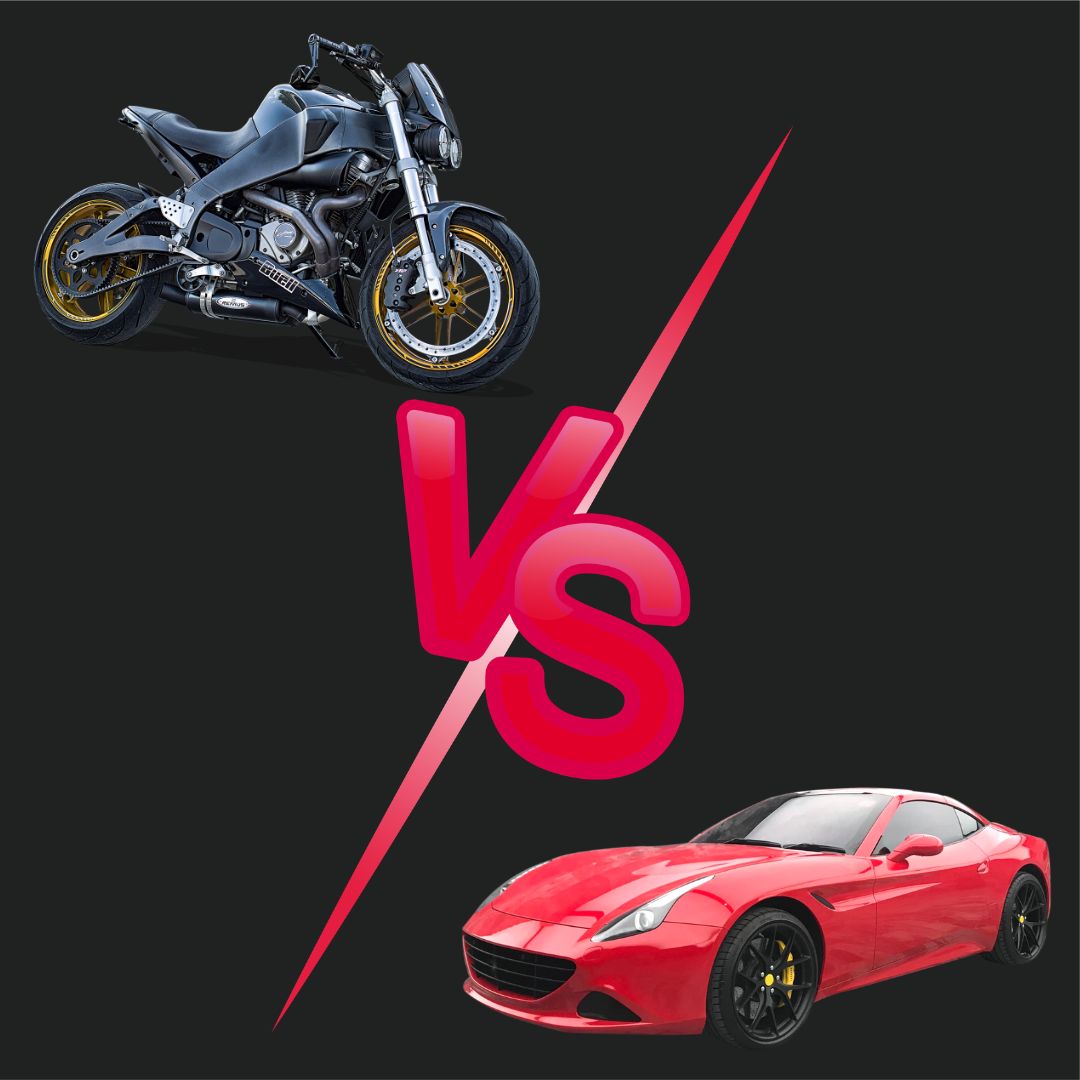
Bad Braking
by Allan McCarthy
We know that bikes can easily out-accelerate most cars, because the ratio of power-to-weight is better for motorcycles. This quick, exhilarating acceleration can also get us into trouble – especially if we might not be able to stop as fast as the cars around us. Whoa! Before you give me the argument that bikes are lighter than cars, and therefore stop faster, let me give you a bit of context about what prompted me to write this article – and put my head on the proverbial chopping block.
I happened to meet Chris Maida who was a magazine editor on an organized ride through Arizona in 2015. During the eight days that I rode with Chris, I had the opportunity to pick his brain on the many mechanical quirks of my 2008 FLHTCU Electra Glide. I mentioned to Chris that I thought cars generally stopped faster than bikes. We debated this topic a bit with no certain outcome because there are many variables to consider: type of bike, road conditions, brand of tires, amount of rubber contact with the road, weight of the bike, skill of the rider, reaction time, etc. I should note that Chris is a tough guy to debate because of his extensive knowledge about bikes – like debating a master mechanic and motorcycle encyclopedia rolled into one. Be prepared to lose! The debate ended with Chris saying “This would be an interesting topic to explore in an article. Why don’t you write one?” Challenge accepted, but I had no idea that I was opening a Pandora’s box of issues. This might be why Chris was smiling when I accepted the challenge.
To state the obvious, regardless of which stops faster, cars have the inherent advantage in the event of a car and bike tango: multiple airbags, crumple zones, seat belts, and mass. Our vehicle (the motorcycle) doesn’t have a single airbag, and our body is in a crumple zone. Knowing the limits of our equipment can only help us make better real-time decisions when we ride.
For many years I believed that the average car could stop faster than the average motorcycle. This may not have been true a couple of decades ago. Motorcycles used leading edge brakes, tire compounds, and so on, long before the average car had advanced braking technology and Antilock Braking Systems (ABS). That has all changed. Today, it might be more common to get ABS on a car than on a bike. Cars with a lower center of gravity and four wheels are also fundamentally more stable during panic stops.
This is especially true as the weight of any braking vehicle shifts toward the front wheels during moderate to heavy braking. Motorcyclists can be reluctant to use the full force of their front brake during panic stops for fear of losing control. That being the case, the rider just gave away the largest portion of his braking ability. Before I show the numbers, let’s look at some key factors related to the physics of braking.
Braking Physics
When you apply the brakes on a car or bike, you’re converting kinetic energy (motion) into friction (heat). The friction coefficient in this discussion (the force of friction between two objects) is between the brake calipers and the rotors, and the tires and the road. Bikes, being much lighter than cars, generate less downforce and may not achieve a maximum friction coefficient between the tires and the road, which can cause tires to skid prematurely. So, thinking that the heavier car automatically loses the “braking distance” test because something heavier takes longer to stop is a fallacy. There is a point where the weight of a vehicle overcomes the ability of the tires to grip the road, or more likely, the brake pads to grip the rotors and dissipate heat. A car at about 4,000 pounds won’t likely experience this issue unless running at higher speeds.
Heavier car and pickup truck stopping distances substantially increase at speeds over 80 mph because the brakes can’t deal with the excessive caliper-to-rotor heat energy, which increases as the square of the speed. At much higher speeds motorcycles probably have the braking advantage with their lower weight. In extremely heavy vehicles, such as tractor-trailers, where the weight factor can easily overwhelm the ability of the brakes to dissipate heat (tire traction is not the issue), stopping distances increase dramatically. For example, buses need 280′ to stop from 60 mph, while single-unit trucks and tractor-trailer (semi) trucks need 335′. That’s more than the length of a football field! (Note: this data is for buses and trucks over 10,000 pounds in weight.)
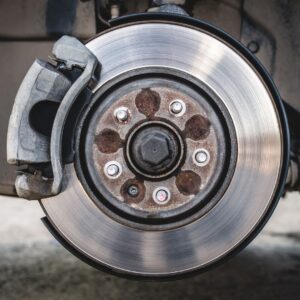
Drivers of cars don’t need to balance or be concerned about fishtailing, high-or low-siding, or how much pressure is exerted on the front versus rear brake. There’s no real skill requirement, especially if the car is equipped with ABS.
Bottom line: motorcycles are not the best stopping vehicles on the road. In fact, high-performance cars are way ahead of the pack in stopping capability.
Look at the numbers and draw your own conclusions. Just don’t think for one minute that your bike will out-stop a car, especially in a panic stop. With this in mind, it’s better to know and compensate for this dynamic in how you ride. Likely, the safest bet is to allow enough room between you and the car in front with the assumption that the car will out-stop you. And maybe assume that you can stop quicker than the car behind you because of your quick reaction time. Therefore, allow even more distance between you and the car in front with a plausible escape route, so as not to get hit from behind in a panic stop.
Is there anything else we can do as riders to put this information to good use? Sure, be prepared. The NHTSA estimated that the typical motorcycle accident gave the rider less than two seconds to react to avoid a collision. What can be done in two seconds to improve one’s odds?
Be aware of the physics of stopping your bike and what you need to do to get the best braking performance in an unforeseen situation. This includes making sure your bike’s brakes, shocks, tires, and suspension system are well-maintained. Have a mental strategy to proactively avoid and cope with the accident scenarios that will likely occur.
The top 9 scenarios are:
- A driver makes a left turn in front of you
- You hit gravel in a blind corner
- You enter a turn too fast
- A car changes lanes into you
- A car hits you from behind
- A riding buddy is stupid, not paying attention, or fooling around (maybe popping wheelies) and runs into the bike ahead of him
- You locked your front brake in a panic stop
- A car door is opened as you pass it
- It’s slippery and down you go
Regarding the first scenario, about 50 percent of all fatal motorcycle crashes involving a passenger vehicle were intersection crashes. 50 percent! Heads up and get off the gas at intersections. Statistically, intersections are a biker kill zone.
Experiment with and adopt riding techniques that will quicken your reaction time. For example, the two-fingered right-hand braking technique can decrease your braking reaction time by 0.15 seconds. Saving 0.15 seconds reaction time at 60 mph equates to about 13′ in stopping distance – the difference between stopping just in time and kissing chrome or a fixed object. Here’s the technique: rest your index and middle finger on the front brake lever when in situations that might require quick reaction time. Use your ring finger, baby finger, and palm to control the throttle. I’ve tried this technique while lane-splitting in California’s terrible Silicon Valley traffic. It works great on my bagger.
Let drivers know what you are doing: use signals. Stay out of a car’s blind spot, especially on a highway. In other words, help the people in cars anticipate your moves. My rule of thumb is to look for the driver’s eyes in his side rearview mirror when passing. If I can see his eyes, he can see me.
Don’t ride under the influence. In about 35 percent of motorcycle fatalities, the driver of the bike was under the influence of alcohol (0.08 blood alcohol content/legally drunk). When we need our reflexes most, we have dulled those with America’s popular drug. Stopping distance is composed of mental processing time plus physical reaction time plus vehicle reaction time plus braking distance. If we’re drugged, we don’t perform the first and second actions well.
Be prepared by getting ASM training and carrying a trauma pack. It’s training you hope to never need, but if someone goes down, you and them will be happy you have it.
Conclusion
As riders we all have one thing in common: we love motorcycles. We love the freedom, the exhilaration, the connection with the environment, the adrenalin rush, the independence. It’s our choice how we do it, and the level of risk that we’re willing to assume. My suggestion is that we all make an attempt to know our limits and ride within those limits. Knowing that we are statistically doing something that has an element of risk to it, we should prepare to avoid or handle those “braking bad” situations.
My debate with Chris on this topic ended in this article. Next time I see Chris and want to discuss a hot topic regarding bikes, I think I’ll just keep my mouth shut and ride.
-Allan McCarthy
